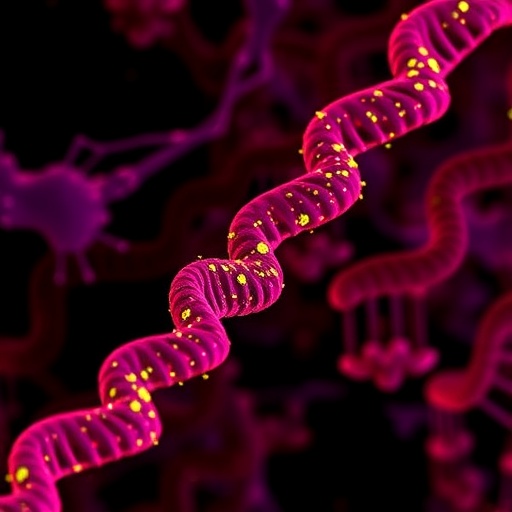
An Ultrasensitive Breakthrough in Cell-Free RNA Detection Heralds a New Era in Non-Invasive Diagnostics
In a groundbreaking development poised to transform the landscape of non-invasive disease monitoring and gene expression profiling, researchers have unveiled RARE-seq, an ultrasensitive technique for detecting cell-free RNA (cfRNA) fragments circulating in human plasma. Targeting a long-standing challenge in molecular diagnostics, this innovative method promises unparalleled sensitivity, opening new frontiers in early cancer detection and personalized medicine.
Cell-free RNA has emerged as a promising biomarker due to its ability to reflect dynamic gene expression changes from various tissues. However, traditional approaches to cfRNA profiling have been hindered by low abundance, fragmentation, and contamination issues, particularly from platelets, which dilute the accuracy of measurements. The need for a refined, highly sensitive approach has been critical to harnessing cfRNA’s full clinical utility.
The team behind RARE-seq addressed these barriers by combining random priming with affinity capture to enrich cfRNA fragments before sequencing. This method significantly improves the recovery of low-copy transcripts, allowing for interrogation of gene expression patterns that were previously obscured by noise or overshadowed by background signals. The clever integration of affinity capture facilitates selective enrichment, ensuring that tumor-derived RNA can be reliably detected even at trace levels.
A notable hurdle in cfRNA research has been the confounding effect of platelet contamination, since platelets release RNA that can mask signals from diseased tissue. By developing an optimized protocol that minimizes platelet-derived interference, RARE-seq effectively isolates true circulating cfRNA signatures, thereby enhancing diagnostic precision. This breakthrough analytic refinement marks a pivotal advance over conventional whole-transcriptome RNA sequencing techniques.
Analytical validation demonstrated RARE-seq’s impressive sensitivity, achieving a limit of detection as low as 0.05% for tumor-derived cfRNA fragments. Compared directly to standard RNA-seq, the technique offered a staggering approximate 50-fold increase in sensitivity. This remarkable performance positions RARE-seq as a new gold standard for cfRNA analysis in both research and clinical contexts.
To illustrate clinical applicability, researchers applied RARE-seq to plasma samples from 369 individuals, encompassing patients with various stages of cancer alongside controls. In cases of non-small-cell lung cancer (NSCLC), the ability to detect tumor-specific expression signatures improved with disease progression—rising from 30% detection at stage I to an impressive 83% sensitivity at stage IV while maintaining 95% specificity. Such sensitivity surpasses that of standard circulating tumor DNA (ctDNA) assays, underscoring cfRNA’s emerging prominence as a complementary liquid biopsy analyte.
Beyond mere detection, RARE-seq effectively identified resistance mechanisms in patients undergoing targeted therapy. In EGFR-mutant NSCLC patients who developed resistance to tyrosine kinase inhibitors, the method uncovered both histological transformation and mutation-based resistance mutations. This dual detection capability highlights the potential of cfRNA monitoring not only for diagnosis but also for real-time therapeutic guidance and disease management.
The versatility of RARE-seq extends past oncology. The researchers demonstrated the technique’s capacity to pinpoint tissue of origin and to discriminate between malignant and benign pulmonary conditions, opening avenues for broader diagnostic utility. Additionally, RARE-seq was utilized to track immune responses following mRNA vaccination, offering insights into vaccine efficacy and host response dynamics at a molecular level.
Technically, RARE-seq leverages a sophisticated balance of molecular biology strategies. Random priming permits amplification of fragmented RNAs irrespective of sequence bias, while affinity capture enriches relevant cfRNA fragments by targeting unique biochemical features. This two-pronged approach dramatically increases yield and fidelity, ensuring that even minute amounts of tumor-specific RNA are amplified above background noise.
The impact of this ultrasensitive cfRNA analysis technique resonates beyond oncology, foreshadowing transformative applications in infectious disease, immunology, and personalized medicine. Real-time monitoring of gene expression shifts could enable clinicians to detect disease flare-ups, therapeutic resistance, or vaccination responses with unprecedented accuracy and timeliness.
As researchers continue to refine RARE-seq’s analytical pipeline and validate its utility across diverse patient populations and disease states, this method stands as a testament to the power of integrating molecular innovation with clinical insight. By overcoming longstanding technical limitations and delivering robust cfRNA profiles from plasma, RARE-seq sets a new standard for liquid biopsy technologies.
In an era where precision medicine continually pushes boundaries, the advent of RARE-seq represents a monumental stride towards truly non-invasive, comprehensive molecular diagnostics. This technology holds promise to revolutionize early detection, treatment monitoring, and biomarker discovery across a spectrum of diseases, ultimately improving patient outcomes through tailored interventions.
The unveiling of RARE-seq illustrates how innovative approaches to RNA biology can redefine translational medicine’s toolkit. Its heightened sensitivity, detection breadth, and adaptability position it as a transformative assay for future clinical trials, routine diagnostics, and personalized therapeutic strategies, underscoring a bold new chapter in biomarker research.
With its impressive ability to overcome crucial sensitivity and specificity barriers, RARE-seq may soon become indispensable in clinical practice and research, offering a powerful window into the elusive landscape of circulating RNA. As this technology gains traction, it promises to bridge critical gaps in our understanding of disease biology and therapeutic response, shining new light on the path toward individualized healthcare.
Subject of Research: Detection and analysis of cell-free RNA (cfRNA) for non-invasive gene expression profiling and disease monitoring.
Article Title: An Ultrasensitive Method for Detection of Cell-Free RNA
Article References:
Nesselbush, M.C., Luca, B.A., Jeon, YJ. et al. An ultrasensitive method for detection of cell-free RNA. Nature (2025). https://doi.org/10.1038/s41586-025-08834-1
Image Credits: AI Generated
Tags: advancements in molecular diagnosticscell-free RNA applications in diagnosticschallenges in cfRNA analysisearly disease detection using cfRNAenhancing sensitivity in RNA sequencinggene expression profiling innovationsnon-invasive cancer monitoring techniquespersonalized medicine breakthroughsRARE-seq technology advancementsrefining RNA biomarker sensitivitytumor-derived RNA detection methodsultrasensitive RNA detection method


